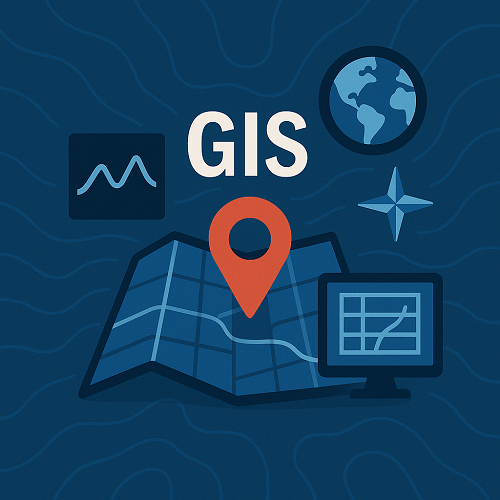TL;DR
- AI-driven analytics are enabling faster, more accurate GIS insights.
- Drones are revolutionizing high-resolution geospatial data collection.
- Organizations worldwide integrate GIS into critical decision-making processes.
- Advanced data workflows are redefining mapping accuracy and predictive modeling.
- Interoperability and real-time processing are key competitive advantages in 2025.
What’s new right now
In 2025, GIS is rapidly evolving with the integration of artificial intelligence and unmanned aerial systems (UAS). AI algorithms are automating spatial data interpretation, while drones are accelerating on-demand mapping. According to Esri, organizations are increasingly adopting near-real-time geospatial monitoring for environmental and infrastructure projects. Advances in geospatial data collection, such as hyperspectral drone sensors, are also setting new benchmarks for precision (United Nations Geospatial Information Section).
Why it matters
For business leaders, enhanced GIS capabilities translate into more efficient resource allocation, better risk management, and market-responsive planning. Technical teams benefit from streamlined workflows, reduced manual processing, and more actionable data outputs. AI-enabled analytics can cut turnaround times from days to hours, while drone surveys lower operational costs for field work. In a competitive market, the ability to process and analyze geospatial data faster provides a decisive edge.
Key Trends in GIS Technology
Some of the most impactful developments shaping GIS in 2025 include:
AI-Integrated Spatial Analysis
Machine learning models are identifying patterns in geospatial datasets that traditionally required extensive human review, improving predictive accuracy in planning and environmental monitoring.
Drones and Remote Sensing
These platforms are enhancing survey reach, precision, and safety, capturing data in areas where traditional fieldwork would be costly or dangerous.
Real-Time Data Processing
Edge computing is enabling processing and analytics to occur closer to data sources, reducing latency and allowing for live geospatial dashboards.
Comparison of Modern GIS Approaches
| Approach | Advantages | Limitations |
|---|---|---|
| AI-Driven GIS | High-speed analysis, improved forecasting accuracy | Dependent on quality of training data |
| Drone-based Surveys | High-resolution imagery, rapid deployment | Regulatory constraints, weather dependency |
| Traditional Field Surveys | Ground-truth validation, human expertise | Labor-intensive, slower data turnaround |
| Satellite Imagery | Global coverage, multispectral data | Possible cloud interference, longer revisit times |
Mini Case Study: Flood Risk Mapping Enhancement
Problem: A metropolitan region faced increased flood risks due to climate change, impacting insurance rates and urban planning.
Approach: The city employed AI-enhanced GIS analytics combined with drone-based LiDAR surveys to model flood scenarios with greater accuracy. Real-time rain gauge networks fed data directly into GIS dashboards for updates.
Outcome: Predictive flood maps achieved 92% accuracy in risk zones, enabling planners to revise zoning laws proactively. Insurance claims processing time for flood damage decreased by 35% due to improved risk profiling.
Implementation Checklist
- Define objectives and desired GIS outputs for your project.
- Assess and acquire the necessary hardware (drones, sensors) and software.
- Integrate AI models for automated spatial data classification.
- Ensure compliance with data privacy and drone flight regulations.
- Train the technical team on new workflows and data analysis tools.
- Set up real-time data ingestion pipelines and dashboards.
- Run pilot projects to validate accuracy before full-scale deployment.
FAQs
What is the role of AI in GIS?
AI automates tasks such as pattern recognition, classification, and prediction, reducing manual workload and increasing accuracy.
How are drones used in GIS?
Drones collect high-resolution spatial data quickly, providing imagery and LiDAR point clouds for mapping and analysis.
Can GIS be updated in real time?
Yes, with edge computing and IoT sensors, GIS systems can process and display data as it is collected.
Is modern GIS affordable for small businesses?
Cloud-based GIS platforms offer scalable solutions that reduce upfront costs for smaller organizations.
What industries benefit most from advanced GIS?
Urban planning, agriculture, environmental monitoring, disaster response, and infrastructure management.
Are there privacy concerns with GIS data?
Yes, especially with high-resolution imagery; proper governance and compliance are essential.
Conclusion
As AI and drone technologies converge with GIS, the opportunities to transform decision-making through spatial intelligence are expanding rapidly. Organizations that invest now can reap strategic benefits across operational efficiency, risk management, and innovation. For tailored solutions, explore our GIS services and discover how cutting-edge geospatial tools can elevate your projects in 2025.
